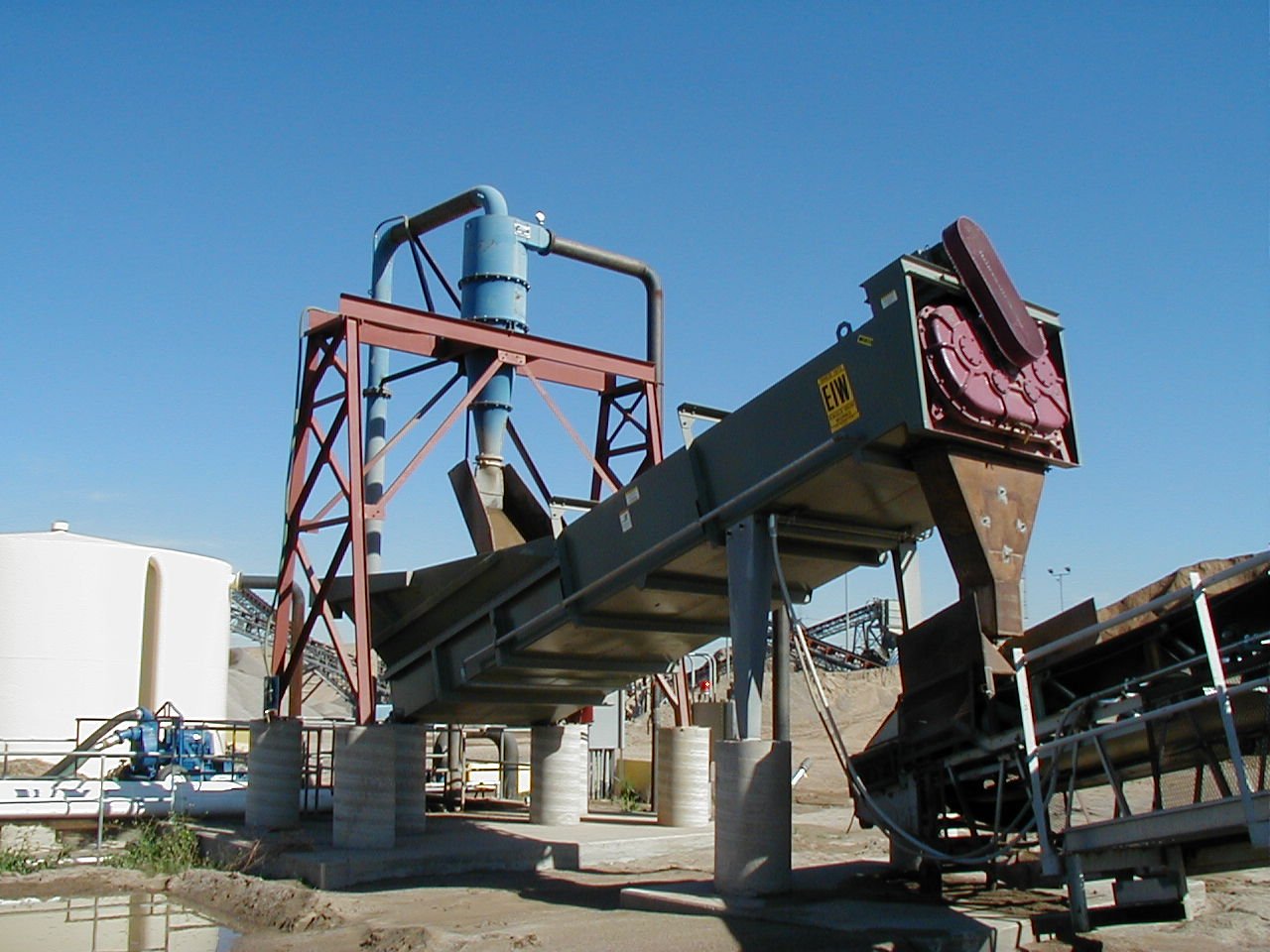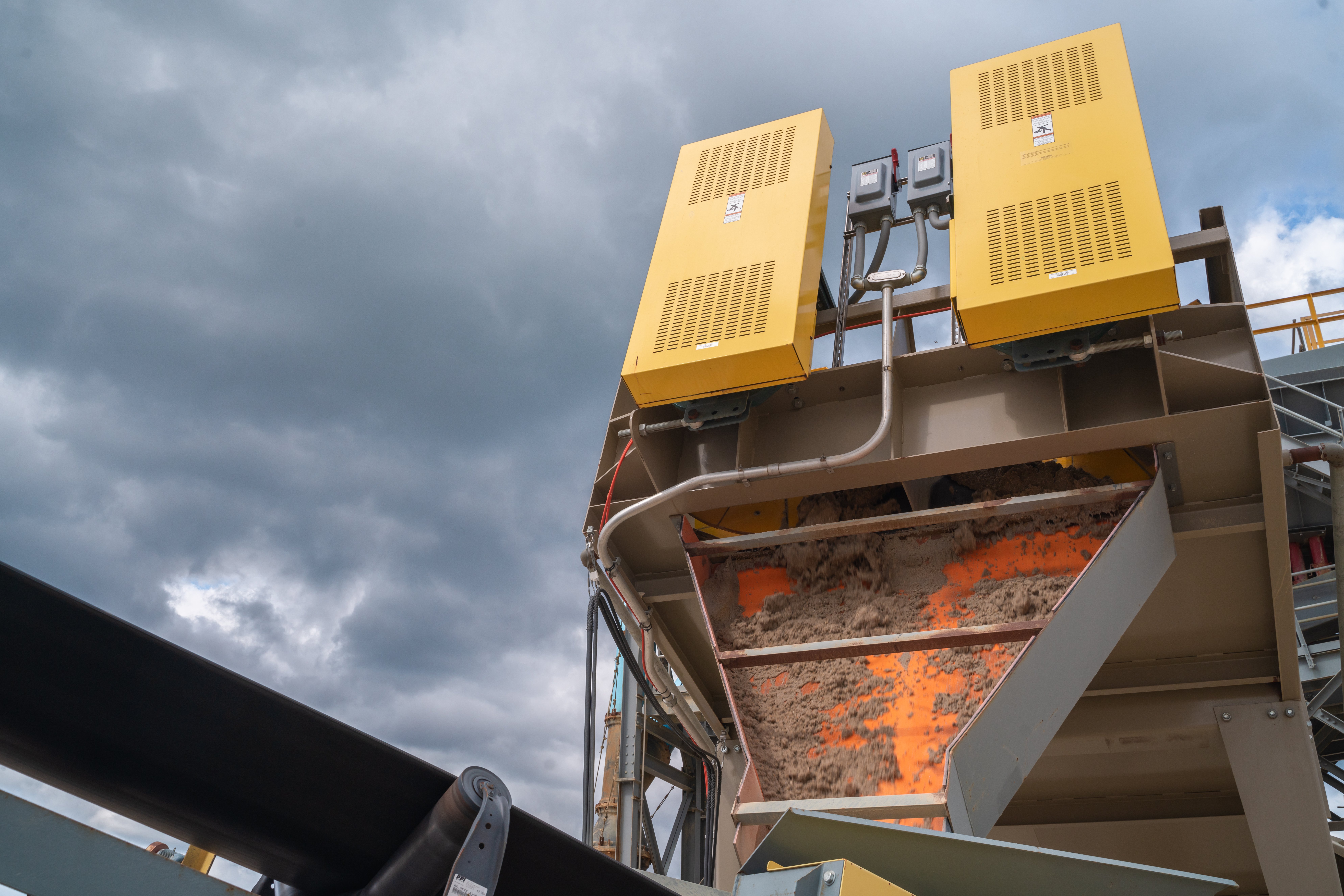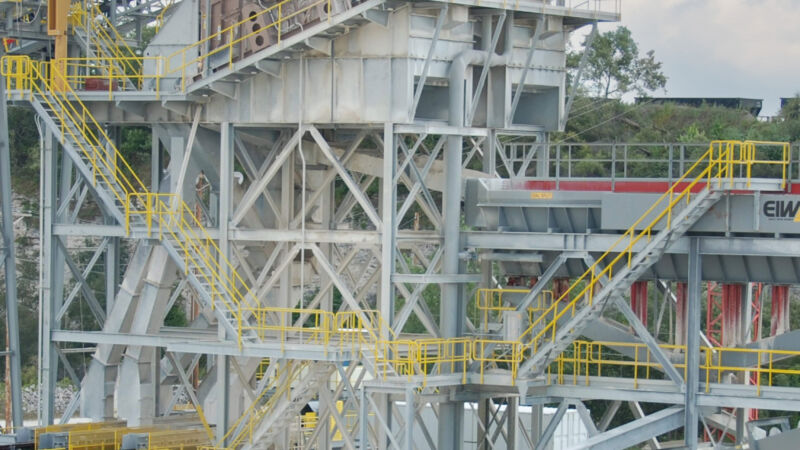
Sand Screws and Cyclones: Which is Best for Washing Sand?
Sand washing has never been a one-solution-fits-all process. There are many different types of sand and many different types of sources and deposits. Likewise, there are many different types of sand processing equipment and systems. Some common systems include sand screws (or Fine Material Washers) and cyclones or a combination of the two.

A cyclone and sand screw.
Sand Screws
Sand screws provide two primary functions of washing and dewatering in one machine. They contain one or two rotating screw shafts equipped with spiral flights housed within an inclined tub.
Feed enters a pool of water in the washing area at the back of the machine. Coarse, heavier particles sink to the bottom of the tub, while smaller, lighter particles float to the surface and discharge with the wastewater over the three weirs lining the sides of the washer tub.
The coarser material is conveyed out of the washer tub by the rotating screw shafts and travels up the incline toward the discharge end. As sand progresses to the elevated discharge point, water in the material leaves the sand and flows back toward the rear of the washer box, where it overflows the weirs.
Cyclones
Cyclones are comprised of hollow conical sections. Feed material in a slurry enters near the top of the cyclone at a designated pressure and volume. Larger particles are flung/spun to the outer edges of the cyclone by centrifugal forces and make their way toward the discharge cone (or apex) at the bottom. Fine particles and water remaining the center of the cyclone spin upward toward the overflow from the pressure of the slurry of pumped solids.
Differences in the systems
Sand screws and cyclones are fundamentally different systems that are good at different things. Sand screws tolerate changes in feed exceptionally well and dewater abrasive, coarse aggregate with low wear, but they do not capture ultra-fine particles. Properly sized cyclone systems are great at capturing fine particles, but they are sensitive to irregular feed and oversize particles.
When deciding which is the right sand washing solution for your application, you have to first consider how sand screws and cyclones work, as well as what is happening to the material as it goes through each piece of equipment. Let’s look at some of the different characteristics of sand screws and separators.
Speed
Cyclones themselves have no moving parts, so they rely on a slurry pump feeding them to provide the energy required to accelerate the material through the cone to make the necessary cut.
Slurry pumps commonly run at speeds ranging from 600 to 1,000 rpm, which means the material that enters the cyclone is moving very fast. This speed allows the cyclone to spin out fine particles precisely and efficiently.
Fine Material Washers, on the other hand, operate much slower than cyclones, at speeds typically ranging from 7 rpm to 21 rpm. This speed coupled with the right amount of water is often sufficient to provide a gentle attritioning to wash the deleterious fine material from the particles as well as to convey the material up the 18 degree incline toward the discharge.
Fine Material Screw Washers operate much slower in comparison to cyclones.
Oversize particles and irregular feed
Sand screws handle irregular feed particularly well. You can feed a properly sized screw 30 tons per hour or 400 tons per hour and the screw will keep running like nothing has changed. Cyclones are much more sensitive to overfeed situations.
Cyclones are also particularly sensitive to oversize. If an oversize particle enters a cyclone, it only has two ways out — through the overflow or the apex, and both of those are small openings. Oversize material can plug the cyclone and halt production.
If an oversize particle enters a sand screw, the screw will simply push it out. EIW Fine Material Washers in particular have a small gap (about 1”) between the wear shoes and the close clearance plate running up the length of the incline. If a 1” or 1.5” particle enters with the feed, you’ll hear it as it’s going up the screw until it discharges with the rest of the material.
Oversize material in a sand screw won’t stop production, but that doesn’t mean you can skip screening ahead of the screw. Feeding a screw too much oversize material can lead to premature wear and damage of various screw components.
Dewatering
Sand screws naturally produce a partially dewatered product, as excess water has time to flow away from the washed sand as it is conveyed up the inclined screw. While they produce a conveyable product that can be discharged to an inclined stacking conveyor, at around 20% moisture, the material still needs time for water remaining in the sand to leach out from a stockpile before it can be sold as product.

Partially dewatered sand discharges from an EIW Fine Material Washer.
Cyclones alone cannot create a conveyable product, but when paired with a Dewatering Screen, they can produce a drip-free product that can discharge directly to a stacking conveyor.
Dewatering Screens can also follow sand screws to further dewater the product for quicker sale.
Which is best for washing sand?
Sand screws and cyclones are both proven pieces of sand washing equipment, but that is about where the similarities end. Choosing which one is best for your application requires an understanding of your goals and the limitations of the equipment.
As mentioned above, sand screws are able to tolerate changing feeds and oversize with little to no effect on production. They dewater material to the point where it is conveyable.
Cyclones capture fines really well, and when combined with a Dewatering Screen, they produce a drip-free product with minimal moisture content.
Sometimes, however, a combination of a sand screw and cyclone working together is the best option. For example, if you have a high concentration of silt in your feed and a screw alone can’t make the required split, adding a cyclone ahead of the screw can help remove those slimes.
Eagle Iron Works or one of its experienced dealers can look at your application and help you to determine whether a screw, cyclone or combination of either in series or both in series is best for your production goals.

